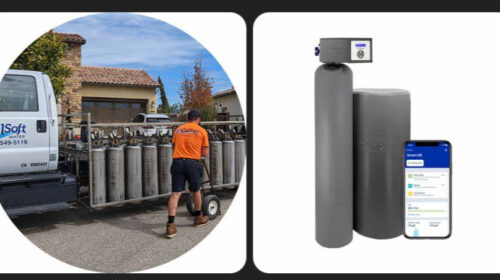When installing a whole house water system, it’s important to think beyond the filters and softeners — and consider how the water flows around your entire property. One of the smartest design decisions you can make is to separate your exterior (unfiltered) water lines from your interior (filtered and softened) lines.
Most homes in Southern California receive water at high pressure (often exceeding 100 PSI) and often contain high levels of calcium, magnesium, and other minerals that affect plumbing and appliances. But while you want your indoor water to be filtered and softened for showers, laundry, and drinking, your outdoor spigots don’t need the same treatment.
Why Separate the Lines?
- Save filter life: Outdoor hoses and irrigation systems don’t require filtered water. Separating your lines prevents wasting filter and softener life on outdoor use.
- Preserve pressure: Filtering and softening can reduce water pressure. Keeping your outdoor lines direct ensures strong hose and sprinkler performance.
- Protect the system: In a fire emergency or irrigation break, you want reliable, unfiltered, unsoftened water ready to flow directly from the main line.
How to Design the Split
We recommend creating a branch system at the point-of-entry (POE) where the water line enters your property or home:
- Install a ball valve just past the POE.
- Split the line into two: one heading to outdoor spigots, the other to the filter/softener system.
- Mark each line clearly with labels and include a shut-off valve on both sides.
At OC Handyman Services, we built our shed-based system (0255) to allow a full-pressure bypass to unfiltered outdoor spigots. This approach ensures clean drinking water inside — and unrestricted utility water outside.
Tips for Homeowners
- Use PEX A 1” lines if possible to maintain full flow.
- Label each valve clearly, especially if the shed is out of sight.
- Use brass hose bibs and frost-resistant spigots for durability.
Outdoor water doesn’t need to be soft — in fact, minerals are good for the soil. By keeping those lines direct, you’ll save money, increase system life, and boost water pressure for outdoor chores.
Want help designing your home’s water split? Our crew can walk you through best practices, or install it for you.


Leave a Reply